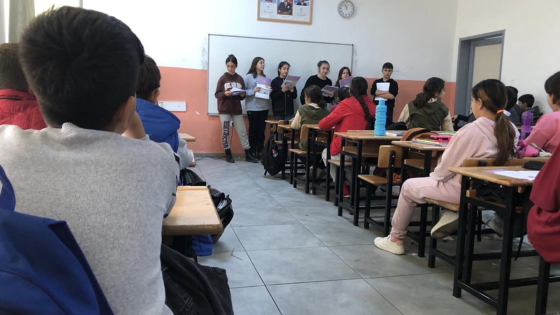A good deal of the direct cost of education is subsidised by governments. In most Western countries, the government provides at least ten years of schooling at no cost to the student. At the university level, tuition and fees are often charged, but there is still substantial government funding. For example, James Heckman estimates that around 80% of the direct cost at major US public universities is subsidised.1
The most commonly-cited economic rationale for public investment in education is positive productivity spillovers from education. The individual student attends school in order to raise his or her earnings potential and possibly to directly increase his or her current utility. The increase in individual earnings due to educational attainment is called the private return to schooling. However, the knowledge gained by an individual can spread or "spillover" to others and thus increase aggregate productivity. The increase in income generated from the spillover is called the external return, while the sum of the private and external returns is the social return to schooling.
Mincerian wage equations
Beginning with the work of James Heckman and Peter Klenow, one approach used to determine the size of the human capital externality is to compare the estimates of the private and social return to schooling.2 Mincerian wage equations at different levels of aggregation can be used to estimate the two returns to schooling. At the microeconomic level, the Mincerian wage equation predicts that the log of earnings depends positively upon years of schooling, labour force experience, and experience squared. The coefficient in front of years of schooling is interpreted as the private return to schooling. At the macroeconomic level, the macro-Mincerian equation predicts that the log of aggregate income is positively related to physical capital, average years of schooling, and average labour force experience. By aggregating individual characteristics, the macro-Mincerian equation can capture externalities associated with schooling and thus provide estimates of the social return to schooling. Lastly, by including both individual and macroeconomic factors, the augmented micro-Mincerian equation can uniquely identify the private return to schooling and the external return to schooling. The sum of the two is the estimate for the social return to schooling.
Evidence from US states
US states provide an opportune laboratory to test for externalities in schooling. First, the educational structure and curriculum are more similar across US states than across countries. Second, state-level and individual schooling data are uniformly collected by the federal government. Third, US states share similar institutional and political backgrounds, while countries do not. As a result, state-level estimates of the return to schooling are less likely to suffer from bias introduced by measurement error, omitted variables, and parameter heterogeneity.3
Labour economists have estimated the micro-Mincerian wage equation using different time periods, samples, and econometric techniques. For the US, the private return to schooling ranges from 4% to 16% with a consensus estimate around 10%.4
The recent construction of state-level physical and human capital stock data has provided the opportunity to apply the macro-Mincerian model to US states.5 Chad Turner and his co-authors estimated a social return of 12% to 15%, while I estimated a slightly lower social return of 9% to 13%.6 The closeness of the estimates of the social return to the private return suggests that US schooling generates little to no external return.7
Researchers using the augmented micro-Mincerian equation find little evidence for the presence of external returns. These researchers match individual earnings and education data to city-level or state-level characteristics. An early study by James Rauch estimated an external return of 3% to 5%. However, more recent work by Daron Acemoglu and Joshua Angrist, Jeremy Rudd, Antonio Ciccone and Giovanni Peri, and Fabian Lange and Robert Topel find no statistically significant external return.
Conclusion
The lack of evidence of external returns does not automatically imply that the US government should stop subsidising education. There are other non-pecuniary externalities that can be generated from schooling. First, increased knowledge can make a person more interesting (and even more attractive) and thus raise the utility of others. Second, Lance Lochner and Enrico Moretti show that schooling reduces criminal activity and generates a substantial social effect.8 Third, Milton Friedman has argued that education enables individuals to participate more efficiently in the political process.9
Footnotes
1 James J Heckman, “Policies to Foster Human Capital,” Research in Economics 51 (2000), 3-56.
2 The original contribution is a working paper entitled “Human Capital Policy.” Extensive reviews of each Mincerian equation can be found in chapters 7, 8 and 11 of Erik Hanushek and F. Welch, eds., Handbook of the Economics of Education (Amsterdam: Elsevier, 2006)
3 William A. Brock and Steven N. Durlauf, “Growth Economics and Reality,” NBER Working Papers 8041 (2000) discusses the potential biases of cross-country growth regressions.
4 Dave Card, “The Causal Effect of Education on Earnings,” in Orley Ashenfelter and David Card (eds.) Handbook of Labor Economics, Vol. 3A, (Amsterdam: North Holland, 1999), 1801-1863 surveys the micro-Mincerian results. The 10% estimate is reported in James J. Heckman and Peter Klenow “Human Capital Policy” and George Psacharopoulos and Harry Anthony Patrinos, “Returns to Investment in Education: A Further Update,” Education Economics 12 (2004), 111-134.
5 Gasper Garofalo and Steven Yamarik, “Regional Growth: Evidence from a New State-by-State Capital Stock Series,” The Review of Economics and Statistics 84, (2002) 316-323 estimate physical capital data. Chad Turner, Robert Tamura, Sean E. Mulholland and Scott Baier, “Education and Income of the States of the United States: 1840-2000,” Journal of Economic Growth 12 (2007), 101-158 estimate average years of schooling and experience.
6 See Turner et al. (2007) and Steven Yamarik, “Estimating Returns to Schooling from State-Level Data: A Macro-Mincerian Approach,” Contributions in Macroeconomics 8: 1 (2008), Article 23.
7 Daron Acemoglu and Joshua Angrist, “How Large are the External Returns to Schooling? Evidence from Compulsory Schooling Laws,” NBER Macroeconomics Annual 2000, 9-59; Jeremy Rudd, “Empirical Evidence on Human Capital Spillovers,” Finance and Economics Discussion Series 2000-46 (Washington: Board of Governors of the Federal Reserve System); Antonio Ciccone and Giovanni Peri, “Identifying Human-Capital Externalities: Theory with Applications,” Review of Economic Studies 73 (2006), 381-412; and Fabian Lang and Robert Topel, “The Social Value of Education” in Erik Hanushek and F. Welch, eds., Handbook of the Economics of Education (Amsterdam: Elsevier, 2006), 459-509.
8 Lance Lochner and Enrico Moretti, “The Effect of Education on Criminal Activity: Evidence from Prison Inmates, Arrests and Self-Reports,” American Economic Review 94 (1994), 155-189.
9 Milton Friedman, Capitalism and Freedom (Chicago: University of Chicago Press, 1962).


